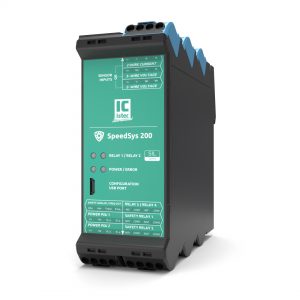Overspeed protection systems have a critical function in the balance between the safety and availability of rotating machinery. These protection systems should be proof-tested periodically to verify the system logic and safety functions. The test interval depends on extensive risk analyses, the instructions of the system manufacturer, and the complexity of the system. This article discusses why you should test your overspeed protection system.
Proof-testing the overspeed protection loop is a requirement of the IEC 61511 (functional safety) standard, which focusses on end-user responsibilities. The proof-test intervals of each individual component in this loop are documented in the safety manuals which are provided by the manufacturers of these specific component (i.e. overspeed detection system). Proof-testing a safety system should reveal failures, if any are present, that were otherwise unrevealed.
Proof-testing from a safety perspective
The most important function of an overspeed protection system is to trip the machine when it exceeds its nominal speed limit or accelerates excessively. To verify whether this trip function works correctly a proof-test is required. By exceeding the required test interval the safety of the machine may be impaired, and subsequently that of the plant personnel, the direct environment and the machine/plant itself. Safety is the biggest responsibility of a plant manager, and should never be compromised.
Proof-testing from a machine availability perspective
Besides safety, plant managers have the task to maximize the availability of the rotating machinery. A situation where the overspeed protection system trips the machine when it should not (false positive) is costly and thus highly undesirable. Even though this type of failure does not have the same catastrophic potential as compromised safety, it should be prevented. To maximize the value generation of critical assets like rotating machinery they should therefore be proof-tested to verify their function.
An important thing to note is that unnecessary trips due to a failing overspeed protection system are easy to notice and only affect the availability of the machine, while the safety remains unaffected. However, this is not the case when the system fails to trip the system when it should (false negative). After all, undetected failures cannot be seen until it is too late and significant damage starts to occur. Proof-testing from a safety perspective is therefore much more critical than proof-testing from an availability perspective.
Functional safety (SIL) requirements
Proof-tests are used to ensure the safety integrity level (SIL) throughout the safety lifecycle. They are an important part of the safety lifecycle and a key act in covering the companies’ safety responsibilities. SIL-rated overspeed protection systems require periodic proof-testing to maintain the SIL-rating. The test interval depends on multiple factors, which are based on extensive risk analyses and OEM requirements.

Read more about our machine safety consultancy »
SpeedSys 200 overspeed detection system
The SpeedSys 200 is a SIL-rated overspeed detection system for rotating machinery. The certified safety design of the system features advanced self-monitoring that enables a proof-test interval of at least 10 years.
Learn more about the SpeedSys 200 »
5 ways SpeedSys changes the overspeed market »

